Hypertrophic Scars and Keloids
start with the short video here
or here (for radiation here,
here and here, general
information here,
here,
here,
here and
here, for more
pictures of keloids go
here.)
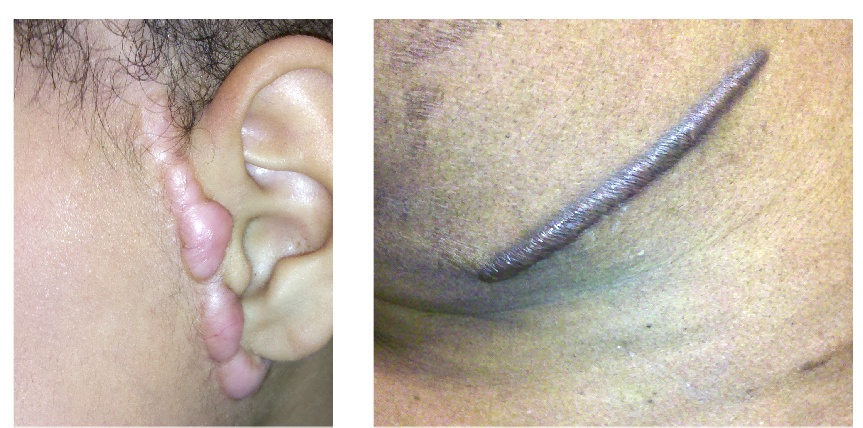
Injury or surgery in a predisposed individual can result in an abnormally large scar. A
hypertrophic scar is inappropriately large but remains confined to the wound site and in
time regresses; a keloid extends beyond the margins of injury and usually is constant and
stable without any tendency to subside. There are histologic differences between
hypertrophic scars and keloids. Keloids are often symptomatic, and complaints arise
because of tenderness, pain, and hyperesthesia, particularly in the early stages of
development. Keloids are most common on the shoulders and chest, but they may occur on any
skin surface. Blacks are more susceptible and sometimes are victims of facial keloids.
Some patients with cystic acne of the back and chest form numerous keloidal scars.

Treatment.
There is no routinely effective therapy for all keloids, but a variety of treatment
methods exists, including intralesional steroid injection, surgical correction,
cryotherapy, compression therapy, and irradiation.
Surgical excision followed by radiation: . Different protocols are reported. Radiation is
usually given within 24 hours after surgery to subdue the second-generation fibroblasts.
The response rate varies between 92% and 73%. Irradiation at a later time is not as
helpful.

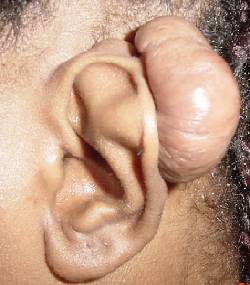 |
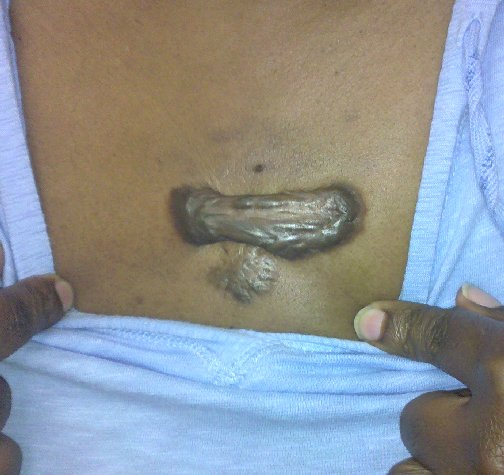 |
| large keloid on ear helix | typical keloid across the sternum |
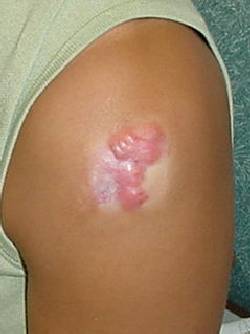 |
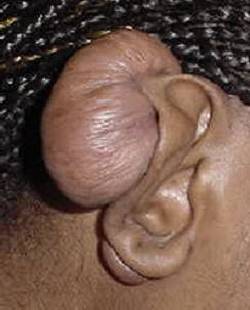 |
| typical vaccination keloid | large deforming keloid on ear helix and small keloid on ear lobe |